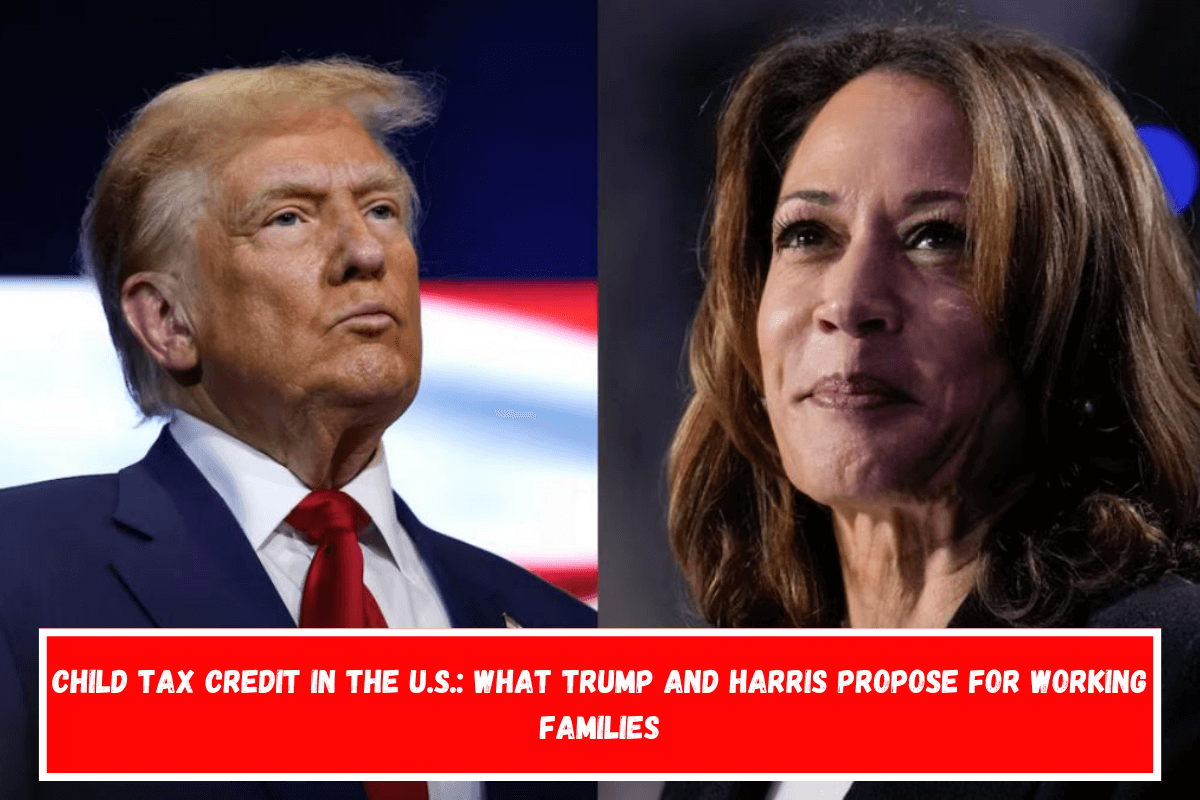The Child Tax Credit has been a lifeline for many American families, particularly in recent years when economic conditions have been difficult.
With the impending presidential election, both the Republican Party, represented by Donald Trump, and the Democratic Party, led by Kamala Harris, have revealed their views for this tax advantage. How do their policies differ, and what are the implications for working and middle-class families?
The Child Tax Credit helps families with young children by lowering their tax burden or, in some situations, providing a refund. During the COVID-19 pandemic, this financing was critical for millions of families facing financial hardship.
In response to the crisis, the government boosted the credit to $3,600 per kid under six years old and $3,000 for those aged six to seventeen, making it completely refundable and available even to households who do not have to file taxes.
Why is the Child Tax Credit so important?
This change established a standard, propelling the Child Tax Credit to the forefront of family welfare discussions. Recognizing its significance, both Trump and Harris have shown an interest in preserving or expanding the Child Tax Credit, recognizing its role in promoting family well-being. Below, we will look at each candidate’s proposal and how their ideas may help or constrain different groups of the population.
Kamala Harris’ proposal on the Child Tax Credit
Kamala Harris, a prominent Democratic figure, has constantly pushed for the middle class and working families. One of the key foundations of her campaign is the expansion of the child tax credit, which aims to allow families to keep more of their earnings.
Harris also intends to strengthen the Earned Income Tax Credit (EITC), allowing more households to benefit from these financial assistance programs.
Harris’ proposal for the Child Tax Credit includes an extra $6,000 for families with infants. According to the Committee for a Responsible Federal Budget, the cost of this project could total $1.2 trillion over the next decade. Furthermore, Harris’s plan maintains the pandemic-era enhanced amounts of $3,600 for children under six and $3,000 for those aged six to seventeen.
Harris hopes that by implementing these reforms, more middle-class families will be able to benefit from the child tax credit, creating a safety net to combat growing inflation and the rising cost of living in the United States. Her plan focuses on assisting families that may be feeling the stress of increased expenses and are looking for a financial buffer.
Donald Trump’s vision for the Child Tax Credit
On the Republican side, Donald Trump has expressed a similar desire to prolong the Child Tax Credit, though his method differs dramatically from Harris’. His campaign team has proposed a larger credit, with amounts ranging up to $5,000 per child. JD Vance, Trump’s running mate, stated in an interview that their goal is to make the child tax credit available to all American families, regardless of income.
Unlike Harris’ approach, Trump’s proposal might eliminate the income criteria that presently limit access to the Child Tax Credit for some families. Today, the benefit begins to phase out for single taxpayers with incomes exceeding $200,000 and married couples earning more than $400,000 annually.
By removing these restrictions, Trump’s plan would allow families from all economic backgrounds to benefit from the full credit, raising concerns about its long-term viability.
Key differences between the two proposals
The key difference between Harris’ and Trump’s policies is their income structure and commitment to aiding working and middle-class families. While the Democratic approach focuses on increasing support for middle- and low-income families, the Republican plan aims to expand the credit to all families, regardless of income.
Harris’ approach prioritizes help programs for the most vulnerable households, such as the Earned Income Tax Credit. Trump, on the other hand, advocates a broader interpretation of the child tax credit, aiming for a more uniform use that ignores income level.
This distinction highlights two opposing political ideologies about the government’s role in giving tax relief: one directed more toward lower-income families and the other with a broader reach, encompassing all income levels.
How will these proposals affect families in the U.S.?
Both plans aim to give tax relief to families with children, but they have different ramifications. Harris’ proposal would be especially helpful to moderate and lower-income families, who would see a significant increase in purchasing power from refundable credits and extra tax breaks. In contrast, Trump’s proposal would increase the Child Tax Credit for all families, potentially benefiting higher-income households.
Ultimately, the impact of either idea will be determined by how it is implemented and the goals of the next administration. For the time being, both Trump and Harris recognize that the Child Tax Credit is an important issue for voters, and their solutions reflect their dedication to the well-being of American families.
Harris’ concept appears to be geared toward providing targeted assistance to families who are more sensitive to economic swings. Her emphasis on strengthening the EITC reflects a desire to make these benefits more accessible to low- and middle-income families. The additional credit for newborns acknowledges the increased costs that parents incur when welcome a new child into the household.
These changes would mean a considerable increase in financial support during a crucial stage of family development, offering parents an essential financial cushion in the early years of their child’s life.
On the other hand, Trump’s proposal to make the credit universal and without income restrictions represents a larger strategy that is consistent with Republican values of limiting government intrusion.
This universal application would make the credit available to a broader range of families, including those with higher income levels. Such an approach pushes for more fair access to tax relief, ensuring that every family with children, regardless of income, benefits.
However, expanding the credit to include families of all income levels may raise problems regarding finance and sustainability. Without income limitations, the government may face considerable difficulty in maintaining such a program over term, particularly if the economy experiences a slump.
Despite these reservations, Trump’s plan appeals to families who believe that tax relief should be available to everybody rather than only those in lower income brackets.
In terms of broader economic ramifications, the child tax credit provides not just immediate cash assistance, but also an investment in future generations. Families who get this assistance can better afford necessities such as food, shelter, and healthcare, contributing to a healthier and more stable society.
This is especially true for middle and lower-income families, who typically reinvest these earnings in the local economy, resulting in a multiplier effect that benefits both businesses and communities.
Also See:- Who Will Never Receive Social Security and Why Alternative Income Falls Short











Leave a Reply